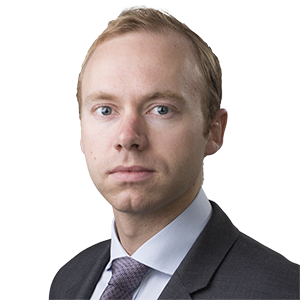Introduction
On January 11, 2021, the UK’s HM Treasury (HMT) and the Department for Digital, Culture, Media and Sport (DCMS) released their joint response on behalf of HM Government to the consultation on expanding the Dormant Assets Scheme (the Response). The Response marks the culmination of over four years’ work between financial institutions, government and the voluntary sector to drive forward reform to the Dormant Assets Scheme (DAS), recognizing its achievements to date and seeking to expand its scope for the benefit of depositors, investors and the wider community.
This is a timely intervention. The DAS is said to have facilitated the transfer of millions of pounds to charitable and social enterprises, to help mitigate the harshest effects of the pandemic on communities across the country. HMT and DCMS estimate that these reforms could see the transfer of £1.7bn of assets to the DAS, and unlock in excess of £800m to be used to make valuable contributions for individuals and communities at an exceptionally challenging time.
In summary, the Response outlines HM Government’s intention to legislate to expand the scope of the DAS beyond deposit accounts held with UK banks or building societies, to include the following additional assets from the insurance, investment and wealth management, and securities sectors:
- Proceeds of life insurance and retirement income policies;
- Shares or units in collective investments;
- Certain investment asset distributions and proceeds;
- Shares and distributions from shares in public limited companies; and
- Proceeds from corporate actions.
HM Government continues to consider possibilities of including assets relating to certain pension products in particular, prescribed circumstances but such proposals do not form part of the Response.
The priorities of the DAS remain to reunite people with their assets, and the fundamental principle that dormant assets remain their owners’ property are both unchanged. The Response recognizes the lengths to which financial institutions go to seek to contact their customers in connection with dormant assets. This requires substantial resource by financial institutions, and our experience is that the DAS provides a very valuable facility for financial institutions with ‘gone away’ customers, seeking to meet their regulatory obligations towards such customers, particularly in the context of business change and transactional activity.
Current statutory and regulatory framework
The Dormant Bank and Building Society Accounts Act 2008 (the Act) establishes the framework for the DAS, which provides a mechanism for banks and building societies to voluntarily channel funds from certain ‘dormant’ accounts into the DAS, which is currently administered by the Reclaim Fund Ltd (RFL). The Act made provision for the activities of persons in connection with the administration of a reclaim fund to be regulated activities; and consequently the Financial Services and Markets Act 2000 (Regulated Activities) Order 2001 contains two regulated activities relating to the administration of a reclaim fund for which, generally a person must be authorized by the Financial Conduct Authority (FCA). Importantly, the Response notes that since RFL was designated by the Office of National Statistics as a public body in 2019, and in view of the fact that no other reclaim funds have been established since the Act was introduced, HM Government intends to legislate to name RFL as the DAS’ only authorized reclaim fund.
Under the current scheme, an account is ‘dormant’ if it has been open for 15 years and there has been no transactional activity during that time by, or on the instructions of the holder of the account unless the bank or building society was under instructions not to communicate with the account holder about the account; or if pursuant to the terms of the account, withdrawals were either prevented or penalized.
The DAS is, and the Response confirms it will continue to be, voluntary. Financial institutions who are members of the DAS are currently able to transfer the balances of dormant accounts to the reclaim fund if they have been unsuccessful in contacting the account holders, despite meeting regulatory rules and guidance and having followed industry best practice.
Proposed reforms
Firstly, the Response confirms HM Government’s position in the consultation that the revisions to the DAS will respect its three core principles:
- Reunification first: Participants’ first priority is to reunite owners with their assets (referred to as ‘TVR’: tracing, verification and reunification).
- Full restitution: Owners are able, at any point, to reclaim the amount that would have been due to them had a transfer into the DAS not occurred.
- Voluntary participation: Participation in the DAS is voluntary.
The principal reforms proposed are to include a much wider range of asset classes, the proceeds of which may be eligible for inclusion in the DAS. A fundamental tenet of the proposals is that only cash can be transferred to the DAS. Consequently, any non-cash assets must first be ‘crystallized or converted’ into cash to be eligible to transfer.
The range of eligible assets is therefore to be expanded and this necessitates revised definitions of dormancy to be set out in legislation for each different asset class. The Response provides HM Government’s proposal in each case.
Insurance and pensions
| Asset class |
Products
|
Out of scope
|
Proposed definition of dormancy
|
|
Proceeds of dormant life insurance and retirement income policies (provided that they crystallize to cash on a contractual, legal or regulatory event).
|
- Savings endowments.
- Term insurance.
- Annuities with a guaranteed payment period.
- Whole-of-life assurance.
- Investment bonds.
- Income drawdowns.
- Deferred annuities.
|
Products that do not crystallize to cash (e.g. an investment bond without a contractual end date and where the participant has not received a death claim).
|
Whichever comes earlier:
- The point at which it is identified that a deceased owner has no next of kin.
- Seven years after a death claim is accepted and there is no ongoing contact with those managing the estate.
- Seven years after the end of the contractual term and there is no ongoing contact with the owner.
OR
- The owner’s records indicate they were born before the oldest living person known at the time of transfer into the DAS.
- There has been no contact with those managing the estate for at least seven years.
|
| |
|
|
|
Investment and wealth management
| Asset class |
Products
|
Out of scope
|
Proposed definition of dormancy
|
|
Proceeds of dormant shares or units in collective investments
|
- Shares or units in an undertaking for collective investment in transferable securities (UCITS) scheme.
- Shares or units in a non-UCITS retail scheme.
|
N/A
|
The owner has been identified as gone-away, in line with industry best practice, for at least 12 years.
OR
The owner’s records indicate they were born before the oldest living person known at the time of transfer into the DAS; and there has been no contact with those managing the estate for at least 12 years.
|
|
Dormant investment asset distributions and proceeds
|
- Distributions of income.
- Redemption proceeds.
- Cash held in client money accounts.
- Orphan monies.
|
N/A
|
The owner has been identified as gone-away, in line with industry best practice, for at least six years since the last payment became due.
OR:
Where the owner’s other assets held by the participant have already been transferred to the DAS, any further orphan monies received after a fund is wound up can be transferred immediately.
OR:
The owner’s records indicate they were born before the oldest living person known at the time of transfer into the DAS; and there has been no contact with those managing the estate for at least 12 years.
|
| |
|
|
|
Securities
| Asset class |
Products
|
Out of scope
|
Proposed definition of dormancy
|
|
Proceeds of, or distributions from, dormant shares.
|
Shares, or distributions from shares, in public limited companies traded on a UK-regulated market or UK multilateral trading facility
|
N/A
|
No contact has been made in relation to the assets by or on the instructions of the owner for 12 years since the owner has been identified as gone-away, in line with industry best practice.
|
|
Unclaimed proceeds from corporate actions.
|
Proceeds from corporate actions, such as takeovers and mergers
|
N/A
|
12 years after the date the company received the consideration.
|
| |
|
|
|
HM Government proposes that eligibility be limited to those assets which are held in the UK and governed by UK law; and by participants operating from an establishment in the UK (which we expect to therefore mean that assets held by UK branches of international banks or insurers would be eligible).
It is also noteworthy that HM Government intends to legislate to require participants to have made efforts, in accordance with industry best practice to trace and verify owners, and reunite them with their dormant assets. This is a feature of the current scheme, and this reform places the expectation onto a legislative footing.
There are several other interesting aspects to the Response, which could precipitate wider reform. For example, in order to assist in smoothing the transfer of ‘dormant’ shares, HM Government encourages industry to propose amendments to the model articles of association under the Companies Act 2006 to establish a common set of terms upon which dormant assets could be forfeited and funds transferred into the DAS.
Practical issues for participants
The Response describes a number of practical challenges which participants in the current DAS will have experienced over time, and the potential complications which might arise in view of expansion. For example, currently owners who have a complaint connected to a reclaim in connection with assets which have been transferred to the DAS, have recourse to the Financial Ombudsman Service (FOS). The Response acknowledges that some ‘assets proposed for inclusion in an expanded Scheme [may] not naturally fall within the scope of the FOS’, and in those circumstances HMT/DCMS expect industry and the RFL to work with the FOS to reach an agreement on voluntary arbitration.
As mentioned above, it is a fundamental tenet of the DAS that owners are able to reclaim their funds, or assets at any point in time after they have been transferred to the scheme by a participant firm. The expanded scope of eligible assets is likely to bring new challenges surrounding valuation of assets. In this regard, the Response sets out HM Government’s position that, in the case of non-cash assets, owners will be entitled to receive a cash payment only, even if the asset itself could be bought back at the time of reclaim. Valuation will be calculated by the participant at the point it verifies the claim.
The potential for dispute here may be more acute for some assets than others, and participants will be mindful of ensuring their compliance with the regulatory rules in connection with complaints, and will no doubt need to form consistent procedural approaches to such claims across the different asset classes. Financial institutions considering the necessary developments to internal policies and procedures in connection with reclaims will need to take account of their wider regulatory expectations, to ensure that customers (and former customers) are treated fairly, in particular for those customers who are identified as vulnerable or potentially vulnerable.
The Response also explains the impact which an insolvency of a participant might have on the value of a claim. Under the expanded DAS, as with the current scheme the RFL will be liable for meeting reclaims for assets transferred by a participant even if the participant becomes insolvent or is wound up. HM Government explains that this is on the understanding that insolvency may result in the owner’s entitlement being impacted and even valued at nil, if this is what would have happened had the transfer to the RFL not occurred.
Noting that legislation remains to be drawn to take forward these reforms, the Response explains HM Government’s intention that eligibility criteria for participants is likely to be wider and less prescriptive than the consultation proposals, and is likely to include any person who provides; holds; manages; safeguards; administers; deals in; issues; or carries out or operates a policy or scheme in relation to an eligible asset.
Consequences for firms and the wider community
Clearly the expansion of the DAS at this time will be welcomed by the large number of beneficiaries of the scheme to date. As individuals and communities continue to suffer the harsh effects of the pandemic, unlocking additional sources of cash capable of being distributed will be a significant and welcome development for many. Our experience of working with clients experiencing the challenges of administration of accounts for ‘gone away’ clients is that these reforms will also be welcomed by those potential participants in the expanded DAS. It provides a practical, usable resource for participants which helps them to run commercial operations more efficiently, meet their legal and regulatory obligations towards their customers and to indirectly support a variety of important initiatives.
Together with our clients, we will continue to monitor developments in this space as HM Government prepares legislation to bring these reforms to life.







